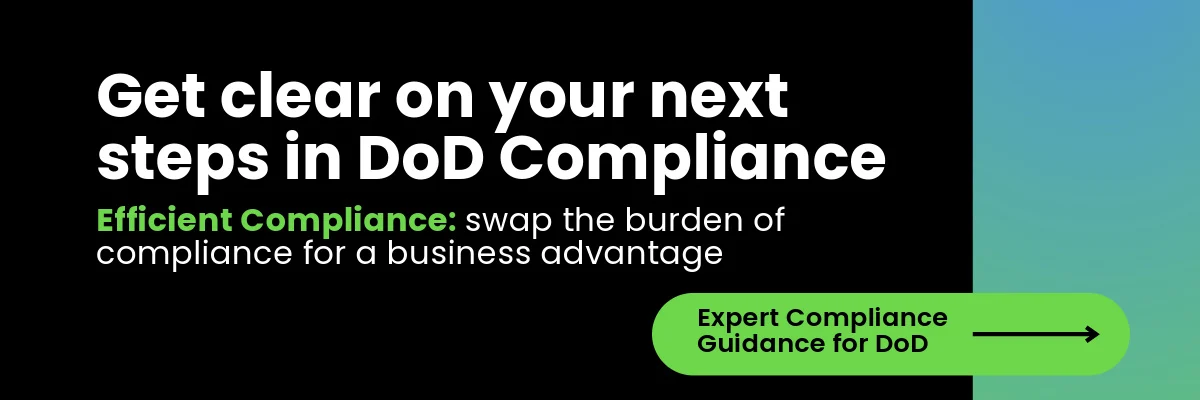Imagine a fortress with multiple layers of security—each designed to protect increasingly valuable treasures. This is essentially what the Department of Defense has created with its Cloud Computing Security Requirements Guide (CC SRG). Far from being just another bureaucratic framework, this guide serves as the cornerstone for how our government protects its digital assets in the cloud era.
At the heart of this security architecture lies DOD Impact Levels—a sophisticated classification system that doesn't just categorize information, but actively shields it based on its sensitivity and potential risks. For companies navigating the complex world of government SaaS and cloud SAS solutions, mastering these classifications isn't just good practice—it's mission-critical.
Why does this matter? Because effective risk management across government systems requires precision. From publicly available information to our nation's most closely guarded secrets, each category demands its own specialized protections. For cloud service providers looking to partner with federal agencies, understanding these impact levels isn't optional—it's the gateway to participation in the government technology ecosystem.
What makes this framework truly powerful is its dual nature: it simultaneously creates robust safeguards for vital government information while creating space for technological innovation within secure boundaries. In today's digital battlefield, that balance between security and progress may be our greatest strategic advantage.
Key Takeaways
- DOD Impact Levels range from IL2 to IL6, each representing increasing data sensitivity
- Security classifications protect government cloud infrastructure from potential breaches
- Cloud service providers must comply with strict DoD security requirements
- Different impact levels mandate specific security controls and protocols
- The framework supports secure digital transformation in federal technology environments
Introduction to Department of Defense Security Framework
The Department of Defense (DoD) security framework is a vital platform for safeguarding sensitive government information. It operates in a complex digital environment. This framework combines multi cloud open-source technologies with strict security measures. It aims to protect national interests effectively.
Core Security Principles and Objectives
The DoD security framework has several key objectives:
- Protecting national security information
- Implementing comprehensive CMMC customer experience protocols
- Ensuring data integrity and confidentiality
- Mitigating potential cyber threats
Evolution of DoD Security Classifications
Security classifications have undergone significant changes to meet modern technological challenges. The Cloud Computing Security Requirements Guide (CC SRG) marks a major milestone. It sets baseline security requirements for cloud services.
| Year | Key Development |
|---|---|
| 2014 | DoD CIO mandates FedRAMP as the minimum security baseline |
| 2015 | Introduction of DoD Impact Level System |
| 2024 | Continued refinement of security protocols |
Role of DISA in Security Standards
The Defense Information Systems Agency (DISA) is crucial in setting cybersecurity standards. It tackles new technological challenges head-on. It protects critical government infrastructure. By integrating advanced technologies and adhering to strict compliance, DISA keeps the DoD at the forefront of cybersecurity.
DISA (Defense Information Systems Agency) plays a central role in establishing and managing DOD impact levels. As the Department of Defense's primary IT combat support agency, DISA has several key responsibilities related to impact levels:
- Developing Standards: DISA authors and maintains the Cloud Computing Security Requirements Guide (CC SRG), which defines the DOD impact levels and their specific security requirements.
- Assessment and Authorization: Through DISA's Risk Management Executive (RME), the agency evaluates cloud service offerings against the security requirements for each impact level.
- Provisional Authorization: DISA issues provisional authorizations to cloud service providers who meet the security requirements for specific impact levels, allowing them to host DOD data at those classification levels.
- FedRAMP+ Requirements: DISA defines the additional security controls (known as FedRAMP+) that cloud services must implement beyond the baseline FedRAMP requirements to achieve higher impact levels.
- Continuous Monitoring: DISA oversees ongoing compliance monitoring of authorized cloud services to ensure they maintain the required security posture.
- Technical Implementation Guidance: The agency provides detailed security technical implementation guides (STIGs) that help cloud service providers properly configure their environments to meet DOD security requirements.
DISA essentially serves as the gatekeeper for cloud services seeking to host DOD data, ensuring that proper security controls are in place based on the sensitivity of the information being stored or processed.
DoD Impact Levels: Classification System Overview
The Department of Defense (DoD) impact levels are a key framework for classifying and protecting sensitive information systems. These levels offer a structured approach to information security. They ensure that different types of data receive the right level of protection based on their criticality.
Cloud Service Offerings (CSOs) are categorized into three main impact levels:
- Low Impact Level
- Moderate Impact Level
- High Impact Level
Interestingly, nearly 80% of CSP applications get FedRAMP authorization at the Moderate Impact Level. The elements of FedRAMP are vital in setting these security standards. They help organizations navigate the complex impact-level assessment protocols.
The DoD uses four defined impact levels:
- IL2: Public or non-critical mission information
- IL4: Controlled Unclassified Information
- IL5: Higher sensitivity mission-critical information
- IL6: Classified information up to SECRET level
Each level has increasing security requirements, with specific protocols for data storage, access, and protection. Organizations must carefully evaluate their DoD impact. They need to determine the right classification and implement the corresponding security measures.
Understanding FedRAMP and DoD Integration
The convergence of FedRAMP and Department of Defense security frameworks marks a significant shift in cloud security standards. Cloud service providers must grasp the intricate relationship between these frameworks to comply with government regulations.
FedRAMP sets a standardized cloud security baseline, defining essential requirements for federal systems. The DoD security framework expands on this, incorporating specialized controls to address its unique national security demands.
FedRAMP+ Concept Explained
The FedRAMP+ approach integrates existing FedRAMP assessments with DoD-specific requirements. This strategy streamlines security certification, promotes reciprocity between FedRAMP and DoD assessments, and fortifies sensitive government data protection.
->Integrate FedRAMP and DoD Frameworks
Security Control Requirements
DoD Impact Levels necessitate stringent security controls, surpassing FedRAMP standards. The progression in security requirements is evident through the following comparative data:
| Impact Level | Security Controls | Primary Focus |
|---|---|---|
| FedRAMP Moderate | 325 controls | Basic federal data protection |
| DoD Impact Level 4 | 369 controls | Controlled Unclassified Information |
| DoD Impact Level 5 | 431 controls | Mission-critical sensitive data |
Authorization Process
The path to FedRAMP and DoD compliance involves several crucial steps. Cloud service providers must show:
- Comprehensive security control implementation
- Continuous monitoring capabilities
- Compliance with DoD-specific requirements
- Geographical and operational restrictions
Approximately 80% of government contractors operate under the Moderate Impact level, underscoring the importance of these complex security frameworks.
Breaking Down Impact Level 2 (IL2)
Understanding Department of Defense impact levels shows the intricate nature of government data classification. Impact Level 2 (IL2) is a key tier in the DoD security framework. It's designed for public or non-critical mission information.
The IL2 classification is a crucial part of the DoD impact level classification. It offers a standardized way to manage less sensitive government data. Organizations working with the Department of Defense need to grasp the specific needs for this impact level.
- Designated for non-controlled unclassified information
- Supports low confidentiality data
- Requires minimal security controls
Cloud Service Providers (CSPs) aiming for IL2 authorization must fulfill certain criteria. Key requirements include:
- Obtaining a FedRAMP Moderate Provisional Authorization
- Implementing 325 moderate security controls
- Demonstrating compliance with personnel security protocols
Major technology providers like Microsoft have developed cloud platforms tailored for IL2 standards. Their Azure, Dynamics 365, and Office 365 environments meet DoD security guidelines.
The FedRAMP Moderate baseline is the minimum security requirement for IL2 cloud services.
Organizations navigating Department of Defense impact levels must recognize IL2 as an entry point for government cloud security. It strikes a balance between accessibility and fundamental protection mechanisms.
Controlled Unclassified Information in Impact Level 4 (IL4)
Department of Defense (DoD) impact level framework is essential for safeguarding sensitive information. It outlines various security classifications. Impact Level 4 (IL4) is a sophisticated method for managing controlled unclassified information (CUI). It adheres to strict security standards.
IL4 is a robust security classification aimed at protecting critical mission data. It requires heightened protection. This level includes 369 security controls, ensuring comprehensive data protection for government agencies.
Types of Protected Information
Within the IL4 framework, several critical information types receive specialized protection:
- For Official Use Only (FOUO) documents
- Personally Identifiable Information (PII)
- Personal Health Information (PHI)
- Non-Critical Mission Information
- Non-National Security Systems (NSS)
Security Control Implementation
The DoD information impact levels for IL4 demand strict security measures. Cloud Service Providers (CSPs) must implement extensive controls. This ensures data integrity and confidentiality. Key requirements include:
- Data residency within the Continental United States (CONUS)
- Management by US citizens or authorized personnel
- Protection against unauthorized disclosure
Compliance Requirements
Achieving IL4 authorization requires meeting complex compliance standards. Organizations must demonstrate:
- Comprehensive security assessments
- Adherence to 38 specific security controls
- Robust protection mechanisms for sensitive information
Non-compliance can lead to severe consequences. This includes legal penalties and operational disruptions. The DoD data classification levels at IL4 are crucial for protecting sensitive yet unclassified information.
Mission Critical Data in Impact Level 5 (IL5)
Impact Level 5 (IL5) is a critical tier in the Department of Defense's data security framework. It's designed to safeguard highly sensitive mission-critical information. This tier addresses the unique security privacy needs for national security-related data. It demands rigorous protection against unauthorized disclosure.
Key characteristics of IL5 include:
- Protection of Controlled Unclassified Information (CUI)
- Stringent risk management protocols
- Enhanced data security measures
- Compliance with CMMC, ISO, and NIST standards
The DoD sets strict requirements for handling IL5 data. Cloud Service Providers (CSPs) must meet specific criteria to obtain IL5 Provisional Authorization. This includes:
- Physical separation from non-federal tenants
- Personnel access is limited to US citizens or nationals
- FedRAMP High provisional authorization
Organizations working with sensitive data must implement comprehensive security controls. Microsoft Azure Government and VMware Cloud on AWS GovCloud show compliance. They maintain dedicated government regions with robust security infrastructures.
Impact Level 5 classifications are meticulously defined by the Defense Information Systems Agency (DISA). They aim to prevent potential catastrophic loss of confidentiality and data integrity.
Organizations seeking IL5 authorization must show exceptional commitment to protecting mission-critical data. They must adhere to advanced cybersecurity practices and continuously monitor sensitive information environments.
Classified Information Handling in Impact Level 6 (IL6)
The Department of Defense's Impact Level 6 (IL6) marks the highest security standard for managing classified information. It's designed to safeguard critical national security data with unmatched rigor and precision.
IL6 is a specialized framework for handling SECRET-level classified information systems. Organizations aiming for IL6 authorization must meet complex security requirements. These go beyond the usual defense information systems agency levels.
Secret Classification Requirements
Key requirements for IL6 certification include:
- Mandatory compliance with CNSSI 1253 security controls
- NIST Special Publication 800-53 control implementations
- Strict US citizenship restrictions for personnel
- Comprehensive risk management programs
Security Measures and Controls
IL6 demands extraordinary security protocols, including:
- Physical separation from non-DoD or federal government tenants
- The virtual and logical separation between mission systems
- Multi-factor authentication
- Need-to-know access management
Access Management Protocols
Access to IL6 systems requires multiple layers of verification. Only personnel with specific security clearances can interact with these highly sensitive information systems.
Achieving IL6 compliance is a complex, time-consuming process. It can take months or even years, depending on system complexity and associated risk levels.
Cloud Service Provider Requirements for DOD Compliance
Cloud Service Providers (CSPs) must navigate through complex DoD cybersecurity levels. The Department of Defense has set up strict standards for information security. These standards require a high level of attention to detail.
There are two main ways for CSPs to obtain a DoD Provisional Authorization (PA):
- Utilizing an existing FedRAMP authorization
- Securing a DoD component sponsorship for a Cloud Service Offering (CSO)
The DoD risk management levels outline specific security frameworks for CSPs. Each impact level necessitates more stringent security controls:
- Impact Level 2 (IL2): Non-controlled unclassified information
- Impact Level 4 (IL4): Controlled unclassified information
- Impact Level 5 (IL5): Nonpublic National Security Systems data
- Impact Level 6 (IL6): Critical national security data
Compliance involves several key steps. CSPs must adhere to DoD FedRAMP+ Security Controls and DISA Parameters. For IL4 through IL6, a Cloud Access Point (CAP) is required for risk mitigation to the Defense Information Systems Network.
The consequences of non-compliance are severe. CSPs must submit a Plan of Action and Milestones (POA&M) within 30 days of requirements publication. This shows their dedication to meeting stringent security standards.
Continuous adaptation and rigorous security protocols are essential for successful DoD cloud service authorization.
Business Benefits and Strategic Advantages of DoD Impact Level Authorization
Obtaining DOD impact levels classification offers organizations key strategic benefits in the competitive government and defense technology market. The importance of DoD impact levels goes beyond mere compliance. It opens up transformative growth and credibility opportunities for businesses.
Cloud service providers (CSPs) reap significant advantages by mastering the DoD impact levels schema:
- Unlock government contract opportunities
- Enhance organizational cybersecurity infrastructure
- Demonstrate rigorous security commitment
- Differentiate from competitors in the technology sector
The destruction of information protocols within DoD impact levels establishes a strong framework for managing sensitive data. Organizations that grasp the concept of impact levels can strategically align with stringent government security standards.
Strategic benefits include:
- Increased market credibility with government and private sector clients
- Potential reduction in cybersecurity risk
- Alignment with digital transformation initiatives
- Potential for expanded business partnerships
By investing in comprehensive DoD impact level authorization, businesses showcase their dedication to advanced security practices. This creates a competitive edge in the rapidly changing technological landscape.
Selecting qualified implementation and guidance
Understanding DoD impact levels is complex, requiring careful partner selection and a deep grasp of secure handling protocols. It's crucial for organizations to choose vendors with a proven track record in DoD impact-level compliance. They should focus on security frameworks that meet FedRAMP and NIST standards.
When looking for implementation partners, scrutinize their experience with DoD impact levels, from IL2 to IL6. Look for specific certifications, experience with Risk Management Framework (RMF) processes, and a deep understanding of classification requirements. This knowledge is essential across different security domains. Working with implementation partners who have personally developed and managed these compliance frameworks in their own companies provides a significant advantage.
The selection process must involve a thorough assessment of potential consultants' abilities in secure handling of DoD impact levels. Using tools like the FedRAMP FIPS 199 Categorization Template and NIST Special Publication 800-60 Volume 2 is vital. These resources help in accurate system categorization and compliance verification.
Continuous education is key to maintaining DoD impact-level guidelines. Organizations must invest in ongoing training programs. They should stay updated with evolving cybersecurity regulations and develop strategies that ensure strong security across their technological ecosystems.
FAQ
What are DoD Impact Levels?
DoD Impact Levels classify information systems and data by their security risks. They range from IL2 to IL6. Each level outlines specific security measures for different sensitive government information types.
How do DoD Impact Levels differ from standard security classifications?
Unlike traditional classifications, DoD Impact Levels focus on the impact of unauthorized data breaches. They span from public data (IL2) to secret information (IL6). Higher levels demand stricter security measures.
What is the role of FedRAMP in DoD security compliance?
FedRAMP is a security framework for cloud service providers. The DoD enhances it with FedRAMP+, offering more stringent standards for government and defense needs.
What types of information are protected at Impact Level 4 (IL4)?
IL4 safeguards Controlled Unclassified Information (CUI), including FOUO, PII, and PHI. It necessitates advanced security controls to prevent unauthorized access.
How do organizations achieve DoD Impact Level compliance?
Compliance requires implementing specific security controls and undergoing assessments. Organizations must obtain certifications and maintain continuous monitoring. They must prove their ability to protect sensitive information according to each level's requirements.
What are the key differences between Impact Level 5 and Impact Level 6?
IL5 protects mission-critical CUI and National Security Systems. IL6 handles classified information up to the SECRET level. IL6 demands the highest security, including top-tier clearances and advanced access controls.
What benefits do organizations gain from DoD Impact Level authorization?
Authorization opens doors to government contracts and boosts credibility. It enhances cybersecurity and market competitiveness. Compliance drives security improvements and digital transformation.
How often do DoD security requirements change?
Requirements evolve to combat new threats. Organizations must stay updated, participate in training, and conduct regular assessments to comply with the latest guidelines.
What is the highest level of DoD security classification?
IL6 is the highest, handling classified information up to the SECRET level. It requires sophisticated security, including strict controls and multi-factor authentication.
Can cloud service providers work across multiple DoD Impact Levels?
Yes, providers can work across levels by showing they can meet each level's security requirements. This often involves a progressive security approach and continuous improvement.




